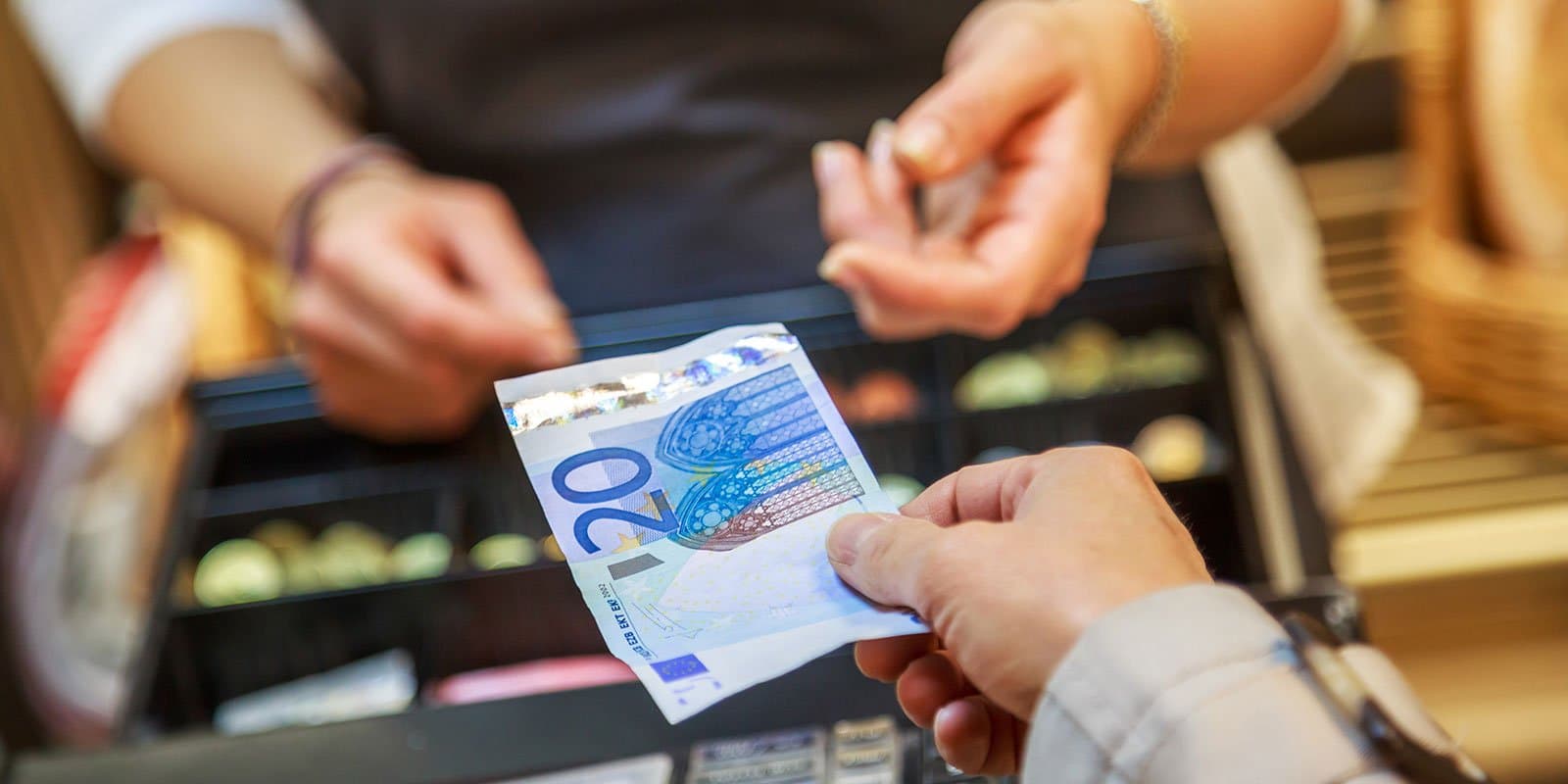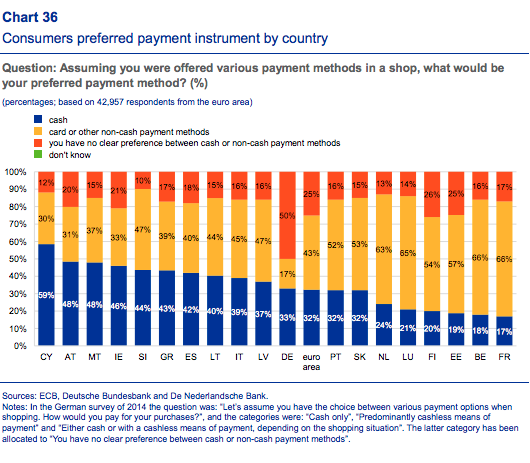
Cash is King in Eurozone, finds new ECB study
A new study by the European Central Bank on Friday sheds some much-needed light on the topic of cash use per household across the 19 euro area countries, and finds that across the EU, cash is king.
Henk Esselink and Lola Hernández present the results of the survey-based study in a report titled, “The use of cash by households in the euro area”. Esselink and Hernández's report provides a comprehensive estimation of the number and value of payments made with cash and cards by consumers in the euro area as well as by country.
The only other recent paper estimating the value and number of payment behaviour around Europe dates from 2008, making this ECB research paper essential reading material for policy makers, key stakeholders and journalists navigating the discussion on cash.
The survey results not only “challenge the perception that cash is rapidly being replaced by cashless means of payment,” but also confirm that cash is still the predominant payment instrument across the Eurozone at a POS level.
The study was published following the ECB’s agreement in 2014 to conduct Surveys on the Use of Cash by Households (SUCH) using survey results from 2016. It is worth noting that 2016 was dubbed 'the year of the war on cash', and yet these results show that cash continues to reign as the dominant payment instrument for household use in Europe. 'In terms of number, 79% of all transactions were carried out using cash, amounting to 54% of the total value of all payments.’
Excerpts from Executive Summary
The use of cash and cards differs according to country, place of purchase, transaction value and consumers’ demographic characteristics. In terms of number of transactions, cash was most used in the southern euro area countries, as well as in Germany, Austria and Slovenia, where 80% or more of POS transactions were conducted with cash.
'...the results put the use of cash relative to non-cash payment methods by consumers at POS into perspective, and indicate that the use of cash at POS is still widespread in most euro area countries. This seems to challenge the perception that cash is rapidly being replaced by cashless means...'
Cash was least used in the Netherlands, Estonia and Finland, where its share in the number of transactions ranged between 45% and 54%. In terms of value, the share of cash was highest in Greece, Cyprus and Malta (above 70%), while it was lowest in the Benelux countries, Estonia, France and Finland (at, or below, 33%)...
Indeed, as the results of this study show, when consumers are asked which means of payment they prefer, a larger share report to prefer cards rather than cash – despite the fact that they use cash more often. This contradiction may be explained by the fact that nearly two-thirds of the transactions conducted at POS in 2016 were below €15. Moreover, two-thirds of all POS transactions took place in shops for purchases of day-to-day items, as well as in restaurants, bars and cafés. On the other hand, only 8% of all POS transactions were above €50, and only 14% were made in shops for durable goods or in petrol stations.

Snippet of Chart 36 from ECB's 2017 'the use of cash by households in the euro area' occasional paper series
Looking at the survey results on preferences per country, it appears that Cyprus is the only country where the majority of consumers said that they prefer to pay with cash if they are free to choose between cash and cashless means of payment. Furthermore, in addition to Cyprus, in Austria, Malta, Ireland, Greece and Spain a larger share of respondents stated that they prefer using cash over cashless means of payment. Continue reading..
Excerpt from Conclusion
This is the first study on the use of cash, cards and other payment instruments by households that applies a harmonised methodology to analyse consumers’ payment behaviour in the euro area. It provides an objective measure of the use of cash and other payment instruments at POS in the euro area with emphasis on households’ daily payments, which tend to be small and often overlooked. The results give insight into the differences in payment choices in the 19 euro area countries.
Overall, the results put the use of cash relative to non-cash payment methods by consumers at POS into perspective, and indicate that the use of cash at POS is still widespread in most euro area countries. This seems to challenge the perception that cash is rapidly being replaced by cashless means of payment. Continue reading...
Read 'ECB Occasional Paper Series' here
Source
Esselink, Henk, Lola Hernández. "Occasional papers series: The use of cash by households in the euro area". No 201. European Central Bank. Electronically published November 2017. Accessed November 25, 2017.
